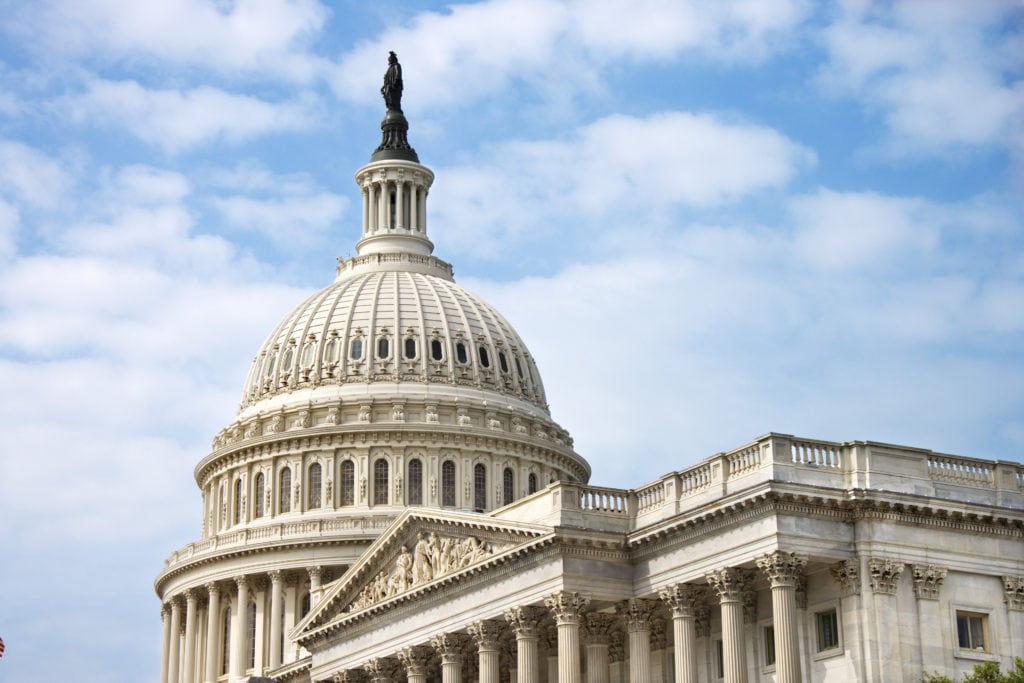March 26, 2020
Lawmakers Reach Deal on Emergency Relief/Economic Stimulus Package
At 1:30 a.m. on March 25, congressional leaders in the Senate and House reached a deal on a $2 trillion economic stimulus package that would increase funding for state and local governments, federal agencies and hospitals to help with the response to the COVID-19 crisis.
The bill provides broad economic support and assistance to individuals and businesses who have been disrupted by illness and stay-at-home orders.
The legislation does not provide sector-specific relief, except for the airline, air cargo and national security industries. Policymakers opted to provide economic relief for businesses across the spectrum.
The Alliance expects continuing interest from members of Congress and the public about the impact of the crisis on news publishers. We will be working with other national and state press associations to make sure that the needs of news organizations – large and small – are heard.
Below is a high-level summary of key provisions. The Alliance will also provide a detailed guide as to how news organizations can access some of these loans / grants.
Individual Assistance
- $1,200 for adults / $2,400 for a family; $500 child credit. There are income limitations on these provisions
- Enhanced unemployment insurance up to 4 months.
- Income tax exclusion for individuals who are receiving student loan repayment assistance from their employer.
Small Business Loans
- The legislation provides $367 billion in federally guaranteed loans through the Small Business Administration for small businesses with 500 employees or less.
- Loans can be used for payroll, healthcare, mortgage, and any other debt obligations.
- Loan forgiveness is possible if the money is used to retain workers.
- Sole-proprietors, independent contractors and other self-employed individuals are eligible.
Loans to Larger Businesses
- Provides $500 billion through the Department of Treasury’s Exchange Stabilization Fund to provide loans, loan guarantees and other investments.
- The direct lending includes the following:
- $50 billion for passenger air carriers;
- $8 billion for cargo air carriers;
- $17 billion for businesses important to maintaining national security; and
- $425 billion for eligible businesses, states and municipalities.
There are limits on stock buybacks and executive compensation for the duration of the loans.
Delay of Payroll Taxes
- Employers generally are responsible for paying a 6.2 percent Social Security tax on employee wages. The legislation delays payroll taxes for 2 years with half of the tax being paid by December 31, 2021 and the other half by December 31, 2022.
Pension Plans
- Sponsors of defined pension plans can delay minimum contributions until January 1, 2021.
Net Operating Losses
- A net operating loss (NOL) from 2018–2020 can be carried back five years. The provision also temporarily removes the taxable income limitation to allow an NOL to fully offset income.
Interest Expensing
- The bill increases the amount of interest expense that businesses are allowed to deduct on their tax returns, by increasing the 30 percent limitation to 50 percent of the taxable income (with adjustments) for 2019 and 2020.
March 25, 2020
What is the Law on Paid Leave During Coronavirus Crisis?
Last week, Congress passed the Families First Coronavirus Response Act, that would make coronavirus tests free, ensure students continue to receive free lunches, and expand unemployment insurance. The new law also requires that employers with fewer than 500 employees provide employees with two weeks of paid sick leave for employees who are unable to work because they are quarantined or because they have to care for a child whose school or day care has closed because of the coronavirus.
After the two weeks, the law requires up to 12 weeks of paid family and medical leave at 67 percent of the person’s normal pay, up to $200 per day or $10,000 maximum. To reimburse employers for this expense, the law provides refundable tax credits equal to 100 percent of qualified paid sick leave wages paid for each calendar quarter.
Employers must post a notice that informs employees of their rights under the new law by March 25, 2020. According to the Department of Labor, DOL will issue a model notice for employers by March 25. The Wage and Hour Division of the Department of Labor has a good explanation of the employer paid leave provisions here.

